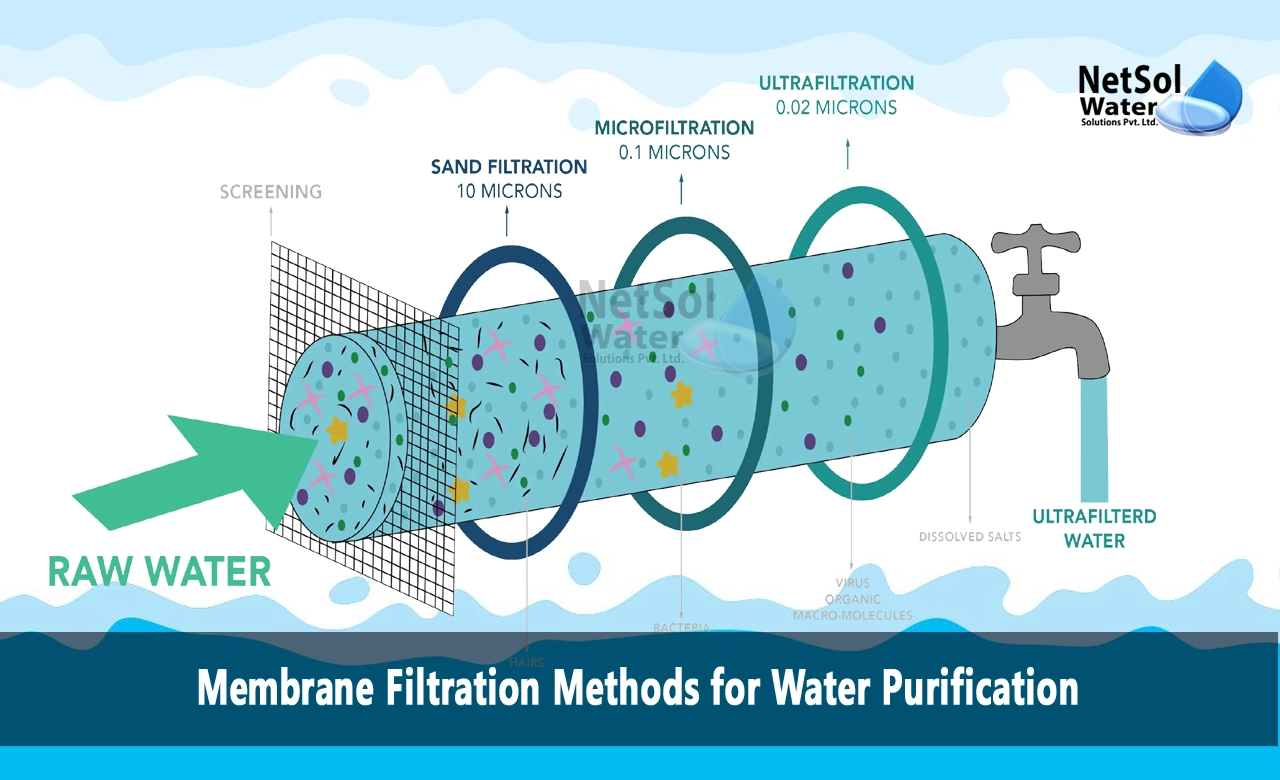Explain Membrane Filtration Methods for Water Purification?
Membrane filtration is an advanced water treatment process that uses semi-permeable membranes to filter out contaminants physically. It facilitates purification through size exclusion rather than chemical or biological means. Membrane technology has revolutionised water treatment, given its reliability and engineering flexibility. However, wider adoption still faces limitations around membrane durability, energy intensity, concentrate management, and cost. Cutting-edge developments are helping realise membrane treatment’s full potential.
Conventional Membrane Filtration Overview
Standard membrane materials include polymers, ceramics, or speciality films. Pore sizes ranging from micro- to nano-filtration selectivity filter dissolved constituents, bacteria, parasites, particulates and more from water passed through. Stacked membrane module configurations enable the building to needed capacities. Key advantages over conventional media filtration are consistent particle removal and automation potential. However, membrane sensitivity, concentrate disposal needs, and energy requirements for pressurisation currently restrict widespread use to mainly seawater desalination.
Innovations in Materials and Modules
New materials like graphene oxide and biomimetic aquaporin membranes offer improved rejection, durability, and flux over legacy polymers. Modular constructions also facilitate scaling by substituting beneficial new membrane sheets into existing standard housing infrastructure. This enables incremental upgrade pathways. Simplifying element cleaning protocols or even developing viable disposable membrane concepts can dramatically impact operations. Materials and modules enable easier membrane integration while improving performance and expanding adoption.
Energy Reduction Breakthroughs
Emerging processes like membrane distillation and electrodialysis leverage thermal and electrical potential gradients for separation in place of pressure. Theoretically, requiring only minor adiabatic cooling or voltage input, such breakthrough technologies could drastically curtail the energy burden limiting current membrane filtration. Any pressure-minimized process also reduces membrane stress and enables alternative fragile but productive materials that were previously impractical. Lower energy methods open doors for purification approaches unmatched by legacy membranes alone.
Netsol Water – Pioneering Alternative Energy Membranes
Netsol Water holds reasonable control around innovative pressure retarded osmosis and reverse electrodialysis membrane platforms. Leveraging saline/freshwater solution ionic potential differences or unique membrane stack configurations, Netsol Water processes can extract productive work equalizing concentrations rather than exerting unsustainable external pressure. Efficient module arrays then utilise passive filtering potentials between water sources that are familiar already. Our breakthroughs can sustainably filter higher volumes than pressure-driven membrane counterparts using no external energy input—just the untapped chemical potential between readily available waters.
Conclusion
Membrane technology has already proven transformational for water treatment in critical areas, but broader adoption demands innovations that conquer existing performance barriers. As materials and membrane construction continue advancing, alternatives that curb concentrate and energy burdens could position membranes as the go-to water purification platform across sectors. New materials that extend membrane lifespans while improving rejection and flux will facilitate scaling implementations to levels not yet feasible. Additionally, process variations leveraging sustainably derived driving potentials from salinity gradients or recovery-focused designs minimise waste and energy consequences—opening doors to previously unserviceable applications.
Specifically, Netsol’s alternative energy membrane portfolio exemplifies cutting-edge innovation, creating opportunities to utilise membrane selectivity for affordable, scalable treatment, lowering energy requirements by up to 85%. Such advances provide membranes unmatched lifecycle advantages over conventional separation processes across drinking, industrial, agricultural, and environmental water sectors. Landmark membrane developments are essential to secure sustainable water quality for users worldwide despite escalating source contamination and climate instability. Netsol’s pioneering platforms represent the future of membrane-driven purification – where passive filtration processes could consistently deliver reliable, resilient treatment meeting any end-use need.
Do you need an advice or assistance on selecting the best water and wastewater treatment unit? We have solutions for all your problems!
Let us know your problem, our experts will make sure that it goes away.
For an assistance or related query,
Call on +91-965-060-8473 Or write us at enquiry@netsolwater.com



